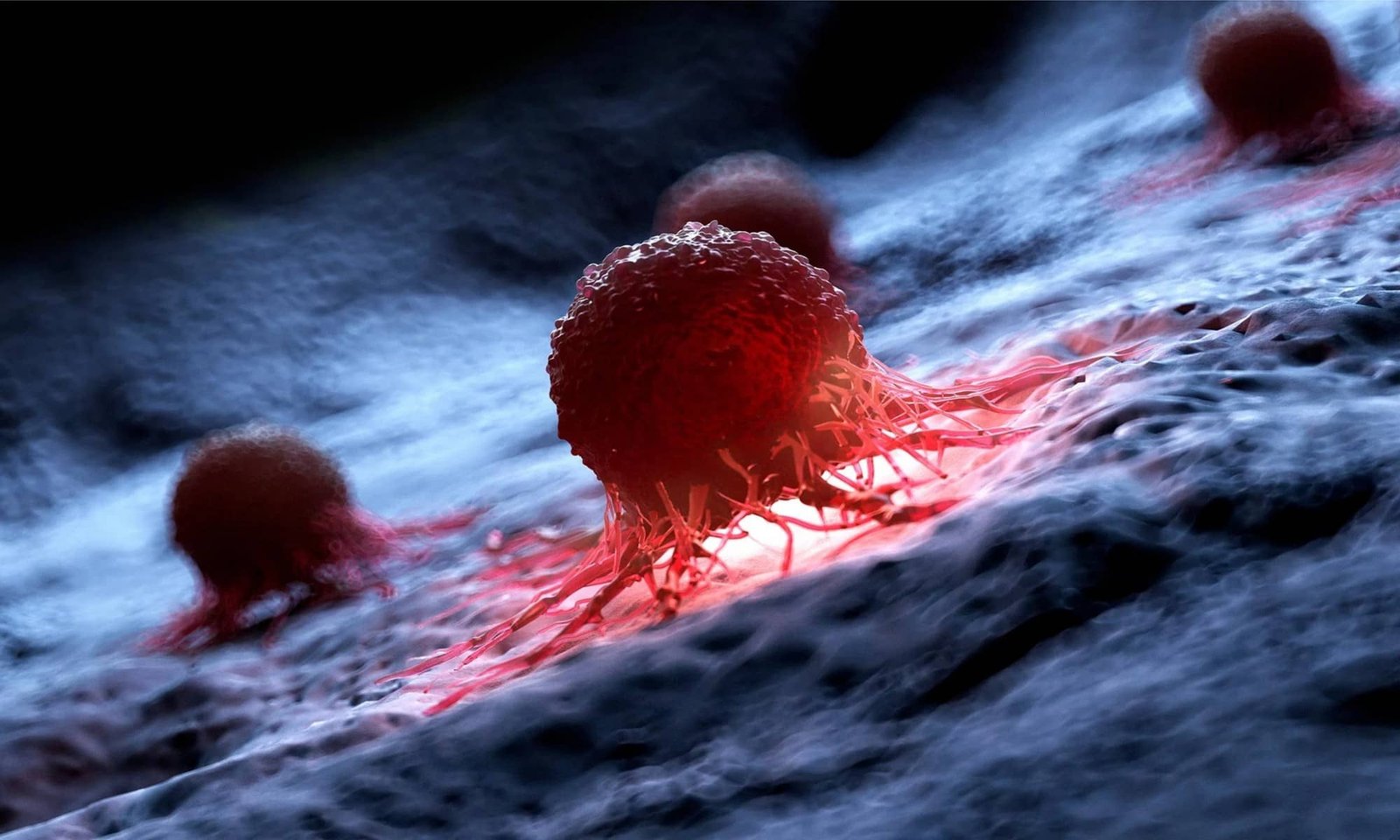Cancer is a complex group of diseases characterized by the uncontrolled growth and spread of abnormal cells within the body. Unlike normal cells, which adhere to the body’s regulatory mechanisms, cancer cells bypass these controls and proliferate, leading to the formation of tumors. Tumors can either be benign, meaning they do not invade surrounding tissues, or malignant, wherein the cancerous cells have the potential to spread to other parts of the body through the bloodstream or lymphatic system.
At the cellular level, cancer begins with mutations in the DNA that cause disruptions in the normal processes of cell division and apoptosis (programmed cell death). These mutations can arise due to several factors, including genetic predisposition, environmental exposures, lifestyle choices, and infectious agents. The accumulation of mutations over time results in the transformation of healthy cells into malignant ones, characterized by rapid division, invasiveness, and the ability to evade the immune system.
There are more than 100 different types of cancer, each classified according to the tissue or organ where it originates. Common types include breast cancer, lung cancer, prostate cancer, and colorectal cancer. Each type of cancer has its own set of risk factors and biological behaviors, making early detection and treatment critical for improving patient outcomes.
Several risk factors are associated with the development of cancer, such as age, family history of cancer, smoking, unhealthy diet, and exposure to certain chemicals or radiation. Furthermore, specific genetic mutations can significantly increase an individual’s susceptibility to developing certain types of cancer. For instance, mutations in the BRCA1 and BRCA2 genes are linked to an elevated risk of breast and ovarian cancers.
Understanding these foundational concepts of cancer is essential as researchers explore innovative cures and treatments. Gaining insight into the mechanisms that differentiate malignant cells from healthy ones will provide a clearer pathway for developing effective therapeutic strategies.
Current Treatments and Their Limitations
Cancer treatment has evolved significantly over the years, with standard approaches including surgery, chemotherapy, and radiation therapy. Each of these modalities plays a crucial role in managing various types of cancer, yet they come with distinct limitations that affect patient outcomes.
- Surgery remains one of the most effective interventions for localized tumors, allowing for direct removal of cancerous tissues. However, its effectiveness diminishes for metastasized cancers, where the tumor has spread to other organs. Additionally, not all tumors are operable due to their size or location, presenting a challenge in treatment strategies.
- Chemotherapy, on the other hand, utilizes powerful drugs to destroy cancer cells or inhibit their growth. While it can be effective for various cancer types, chemotherapy often results in severe side effects, such as nausea, fatigue, and increased susceptibility to infections. Moreover, the development of drug resistance poses a significant hurdle, as some cancer cells may adapt and continue to proliferate despite treatment.
- Radiation therapy employs high-energy rays to target cancer cells, offering a non-invasive treatment alternative. Despite its potential for shrinking tumors, radiation can also cause damage to surrounding healthy tissues, leading to both immediate and long-term side effects. Furthermore, like chemotherapy, radiation therapy may not completely eliminate all cancer cells, increasing the risk of recurrence.
In recent years, the emphasis in cancer research has shifted towards personalized medicine, recognizing the heterogeneity in tumor biology. This paradigm has spurred the development of targeted therapies and immunotherapies, aimed at improving treatment effectiveness. However, these innovative treatments also face challenges, such as high costs and limited accessibility.
As we continue to explore promising new directions for cancer treatment, it is evident that while we have made strides, significant challenges remain in the quest for definitive cures. Acknowledging the limitations of current treatments is essential, as it not only guides us in refining existing therapies but also sparks innovation in developing novel approaches. By addressing these challenges, we can pave the way for future advancements in cancer care, ultimately bringing us closer to the goal of finding definitive cures and improving the quality of life for patients worldwide.
Innovative Research and Breakthroughs in Cancer Therapy
The landscape of cancer treatment has dramatically evolved over the past few years, driven by innovative research and significant breakthroughs in various therapeutic modalities. Among these advancements, targeted therapies have emerged as a pivotal approach, leveraging the unique genetic and molecular characteristics of cancer cells. These therapies are designed to recognize and attack specific pathways involved in tumor growth, offering the potential for more effective treatments with fewer side effects compared to traditional chemotherapy.
Another promising area of cancer research is immunotherapy, which harnesses the body’s own immune system to fight cancer. Various immunotherapeutic strategies, such as checkpoint inhibitors, CAR T-cell therapy, and cancer vaccines, have demonstrated remarkable efficacy in clinical trials. These therapies have provided new hope, particularly for patients with historically challenging cancer types, by improving survival rates and quality of life. The successful application of immunotherapy exemplifies a paradigm shift in how cancer is treated, shifting the focus from direct destruction of cancer cells to empowering the immune response against them.
Moreover, the advent of gene editing technologies, especially CRISPR/Cas9, has revolutionized cancer research, enabling precise modifications to the genome of cancer cells. This tool offers extraordinary potential in identifying genetic mutations that drive tumorigenesis and, consequently, designing tailored therapies. Early clinical studies utilizing gene editing for both diagnostic and therapeutic purposes are paving the way for personalized medicine that can address the unique challenges posed by an individual’s cancer profile.
Despite these encouraging advancements, several challenges persist in the translation of research findings into clinical practice. Issues such as accessibility, affordability, and the need for extensive trials to validate efficacy and safety must be addressed. While the innovative approaches currently being explored promise to reshape cancer therapy, ongoing collaboration within the scientific community will be critical to overcoming these hurdles and translating breakthroughs into tangible benefits for patients, ultimately improving survival rates and quality of life for those affected.
The Future of Cancer Treatment and Research
As cancer research progresses, the future of treatment holds immense potential characterized by personalized medicine, innovative preventive strategies, and an increased integration of technology into health care. Personalized medicine refers to tailoring treatment plans to individual genetic makeups, allowing for more effective interventions that target specific cancer types. Advances in genomics have already begun to facilitate this shift, enabling clinicians to select therapies based on a patient’s unique tumor profile rather than a one-size-fits-all approach. Such tailored therapies can enhance efficacy and reduce unnecessary adverse effects, fundamentally changing how patients experience treatment.
In addition to personalized medicine, the importance of preventive strategies cannot be understated. As research uncovers more about cancer predisposition and risks, public health initiatives focused on prevention will become increasingly vital. Education regarding lifestyle modifications and early detection practices can significantly affect long-term cancer outcomes, highlighting the importance of awareness and access to screening technologies. This proactive approach can lead to early interventions, reducing mortality rates and affecting the overall burden of this disease.
Technology also plays a crucial role in the future landscape of cancer treatment. Artificial intelligence and machine learning are already being applied to analyze vast datasets, helping researchers to uncover patterns and insights that may otherwise remain hidden. These technologies can enhance precision in treatment planning, enabling healthcare providers to anticipate how patients might respond to various modalities. Furthermore, telehealth solutions are becoming integral, expanding access to cancer care, particularly for people in underserved communities.
To realize these advancements, ongoing research funding and collaboration among scientists are essential. Investors, policymakers, and the public must support the continued exploration of innovative therapies and the development of robust infrastructures to facilitate collaboration between institutions. Increasing public awareness also plays a pivotal role, as informed communities can advocate for research funding and support initiatives that foster scientific discovery. With these efforts, the vision for a future where effective cancer cures are accessible to all remains increasingly achievable.
What’s More
The posts in My Blog feature reflective, story-driven pieces rooted in personal and societal insights.
The topics in My Interests explore abstract, philosophical ideas and their cultural and societal impact.
👁️ 8,605 Views














